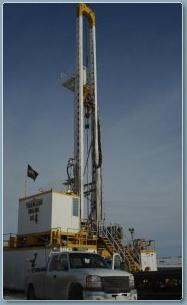| |
Frequently Asked Questions
Q) Who are Quantum?
A) Quantum Prospecting Limited are a small specialist technology company, who provide a new oil & gas surveying solution by harnessing the incredible sensitivity of SQUID sensors to detect hydrocarbon reserves in geological structures.
Q) What services does Quantum offer?
A) Quantum Prospecting provide a complete surveying solution to identify onshore oil & gas deposits. Surveys provide direct oil content information of geological layers, down to depths of several thousand metres and allows the construction of accurate 3D imaging of the resistivity pattern, revealing oil reservoir contours. This information permits precise well drilling and enables efficient recovery in depleted oil reservoirs.
Q) What’s the cost?
A) The precise cost of a survey is dependent on many factors, including location, size, geology and site access. Following initial evaluation of a survey location, clients are given a precise cost calculation per survey site and estimate of the time to completion. Despite the potential variability in cost per survey, experience has shown that the investment in Quantum Prospecting surveying is a significant cost advantage when compared to the risk (and expense) of drilling a dry well.
Q) What is SQUID technology?
A) Superconducting Quantum Interference Devices (SQUID) are very sensitive magnetometers used to measure extremely small magnetic fields, based on superconducting loops containing Josephson junctions. They have noise levels as low as 3 fT•Hz-˝. For comparison, a typical refrigerator magnet produces 0.01 tesla (10-2 T), and some processes in animals produce very small magnetic fields between 10-9 T to 10-6 T. Recently invented SERF atomic magnetometers are more sensitive but are physically huge and power intensive to operate compared to SQUIDs. For decades SQUID sensors were the only way to measure very small magnetic fields.
The DC SQUID was invented in 1964 by Robert Jaklevic, John Lambe, Arnold Silver, and Jame Mercereau of Ford Research Labs after B. D. Josephson postulated the Josephson effect in 1962 and the first Josephson Junction was made by John Rowell and Philip Anderson at Bell Labs in 1963. The RF SQUID was invented in 1965 by James Edward Zimmerman and Arnold Silver at Ford.
There are two main types of SQUID: DC and RF. RF SQUIDs can work with only one Josephson junction, which might make them cheaper to produce, but are less sensitive.
The traditional superconducting materials for SQUIDs are pure niobium or a lead alloy with 10% gold or indium, as pure lead is unstable when its temperature is repeatedly changed. To maintain superconductivity, the entire device needs to operate within a few degrees of absolute zero, cooled with liquid helium.
Q) What does a survey involve?
A) A typical survey can last between 2 to 3 weeks. The survey area consists of a single source location and a grid of measuring points across the whole area of interest. The source location comprises two electrode fields (50m x 5m) connected by an insulated wire approximately 1km in length. The electrodes are grounded in holes similar in size to a fence post and potted in a special mixture of compost. Using an electricity supply from either mains or generator, it is then possible to precisely energise the whole survey area using the accuracy of a GPS clock.
Using our incredibly sensitive SQUID sensors, we are able to undertake measurements across the whole survey grid quickly and with no disruption to the land owner. Using highly portable equipment placed upon the ground, we need a mere 30mins of recording time. This makes it possible to rapidly move from location to location, building an accurate map of the underlying geology, quickly and easily.
Q) Does a survey affect the land?
A) Unlike seismic or electro-magnetic surveys, we cause virtually no impact or inconvenience to land owners. Our equipment is lightweight and highly portable with the added advantage of only requiring a short duration for on-site operatives.
Our method is very different to previous forms of geological surveying. It is entirely environmentally passive, producing no vibration, no noise (other than a small portable electrical generator at the source location) and no radio or electrical interference. Our equipment requires minimal land use and is highly flexible in its location, needing little more than access by foot and no heavy site machinery.
It is our priority that when undertaking a survey, we present very little or no disruption to the normal operation of the landowner’s property. Likewise our equipment offers no risk to people animals or crops in the surveying area.
|


|